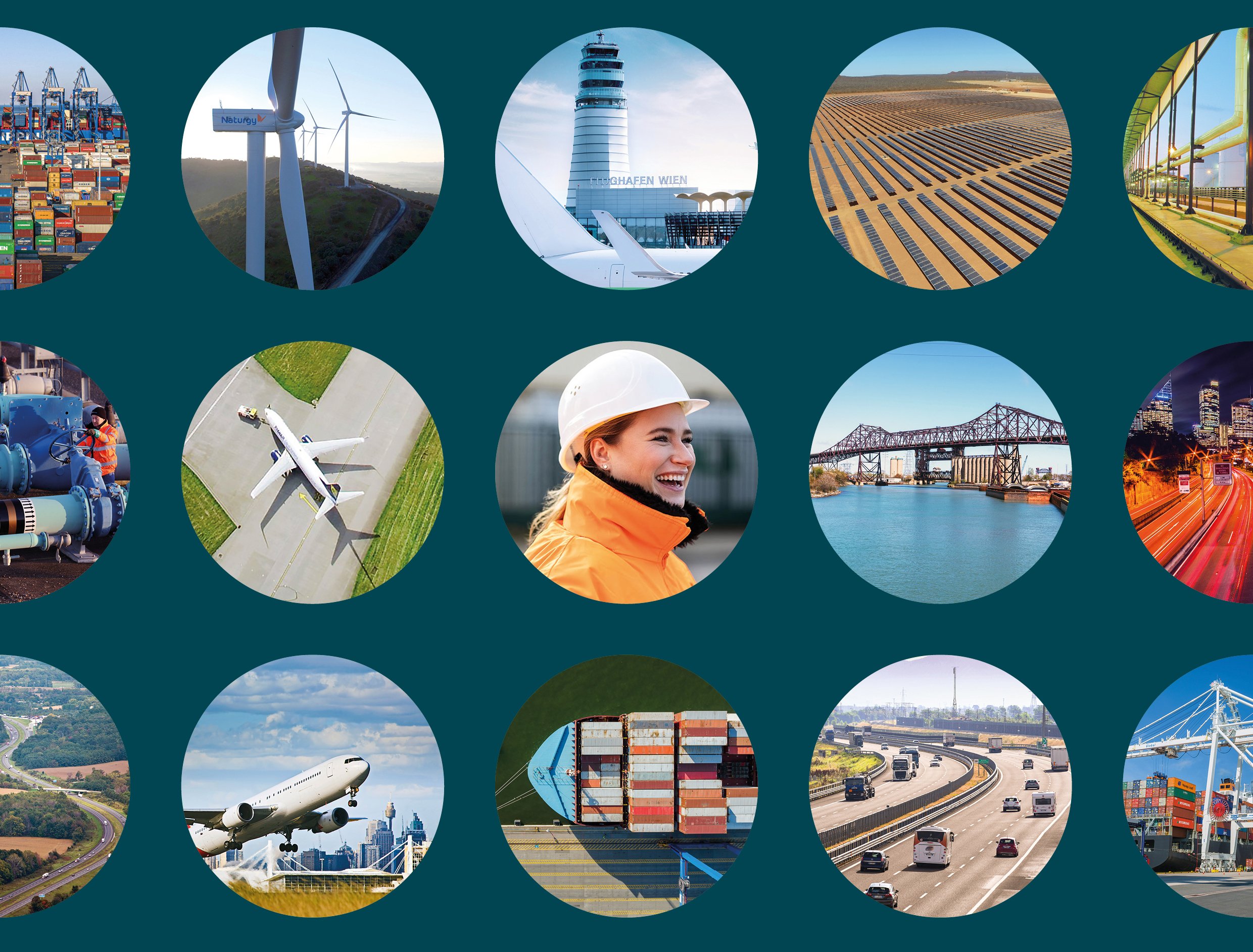Staying invested and managing the infrastructure climate transition

Climate change poses significant financial challenges for investors whose decisions over the next decade will likely play a critical role in determining how the global economy moves towards decarbonisation. One of the key issues for long-term infrastructure investors is how to act on the climate risk and emission profiles associated with the assets held in their portfolios. Many investors grapple with the conundrum of whether they should divest emissions intensive assets or stay invested and help manage the transition to a net zero future.
Divesting is not the only option
We are increasingly hearing from our pension fund clients that they are being challenged by some stakeholders to start divesting emissions intensive and/or fossil fuel dependent infrastructure assets to de-risk portfolios. There is no doubt that understanding and managing transition risks are important to protecting and growing the long-term value of investments we manage. But sometimes, divesting can mean just passing the problem to somebody else. Infrastructure assets are critical to meeting the needs of economies and communities. They are costly to build and require significant planning and licensing – most can’t just be turned off and replaced.
There are, and will continue to be, attractive investment opportunities for those willing to take on the challenge of helping infrastructure assets maintain value, generate returns and prosper in a net zero world. Divesting can mean walking away from these opportunities and the potential returns they can contribute to the long-term retirement savings of working people.
Transition is challenging but makes sense for long-term investors
Decarbonisation will require major new investment. The Net Zero by 2050 scenario explored by the International Energy Agency notes that achieving the net zero goal will “involve a significant further acceleration in the deployment of clean technologies”. It says that by 2030, close to US$1 trillion will be needed annually for clean energy infrastructure, including electricity networks, public electric vehicle charging stations, hydrogen refuelling stations and import and export terminals, direct air capture and CO2 pipelines and storage facilities1.
It is not realistic, however, to think that reaching net zero can be achieved by only investing in new “green” infrastructure projects. In the International Energy Agency’s Net Zero by 2050 scenario, tackling emissions from existing infrastructure accounts for just over a third of the emissions reductions we need to reach our goal2. Some existing infrastructure assets will remain in use for decades and require long term stewardship in order to decarbonise.
Transitioning infrastructure assets for a net zero world is a necessary task but not an easy one. It is complex and highly challenging, and in some instances, it will take decades. It requires ambition, but it also requires patience and detailed, strategic long-term planning as infrastructure assets have bespoke characteristics and operating environments. No two airports or toll roads are the same. Decarbonisation pathways are likely to be different for each asset and will depend on many factors, including the source of the emissions, the level of control the asset has over the emissions, the commercial viability of existing abatement options, technological advances and the prevailing policy and regulatory environment.
Despite these challenges, long-term investors like pension funds are well placed to take part in the climate challenge and help assets and sectors decarbonise, particularly given their alignment with members’ interests and long-term investment horizon.
Starting to navigate the transition
The following case studies, detailing Manchester Airports Group and Anglian Water, illustrate how well-structured and successfully managed transition plans can begin to contribute to society’s net zero goals whilst also providing attractive returns to long-term investors.
Manchester Airport’s climate leadership
Manchester Airports Group (MAG)3 was recently recognised as the top performing transport company on a list of Europe’s top 300 climate leaders for 2021. MAG’s ranking recognises the group’s achievement of reducing its greenhouse gas (GHG) intensity, a measure of tonnes of CO2 emissions equivalent per €1m of revenue, by around 33% between 2014 and 2019.
MAG was the first airport group in the UK to be certified carbon neutral (2015) and has driven reductions in emissions intensity across its three airports, namely Manchester, London Stansted and East Midlands. This was achieved through low energy lighting upgrades and intelligent building controls that help ensure energy is only used where it is needed, as well as renewable energy from on-site wind turbines and the purchase of 100% renewable electricity.
Anglian Water’s net zero 2030 routemap
Anglian Water5 launched its 2030 zero carbon routemap in July 2021 which applies to all of its operational activities (scope 1 and 2 emissions) and encompasses a commitment to reduce scope 3 capital carbon (direct emissions from construction processes) by 70 per cent against a 2010 baseline.
In June 2021, Anglian was the first water company worldwide to issue a sustainability-linked bond (SLB). The seven-year £300 million bond will directly support Anglian’s work towards meeting its interim carbon targets and was significantly oversubscribed by investors6.
Anglian’s routemap is based on the specific needs and challenges of the geographic regions it serves. These regions are characterised by strong population growth and vulnerability to the effects of climate change, which may exacerbate what is already one of the driest parts of the UK. The route map is also closely aligned with the UK water industry’s route map, which was published in 2020.
The key measures in Anglian’s plan include7:
-
Maximising energy efficiency and renewable energy generation and storage and procuring green electricity for all remaining grid requirements;
-
Decarbonising vehicle fleets using electric equivalents, switching to hydrogen or other alternative fuels, or transferring to using Liquefied Natural Gas;
-
Maximising the value of biogas by upgrading biogas production to biomethane that can be exported to the grid, used as transport fuel or supplied to industry, helping to reduce emissions in more challenging sectors of the economy;
-
Managing process emissions by installing monitoring equipment at selected sites to improve understanding of the scale and location of process emissions, which are the water sector’s most difficult to resolve carbon challenge.
-
Opting for alternative fuels by switching 100 per cent of its gas oil demand to hydro treated vegetable oils (HVOs) and developing a plan to maximise the use of hydrogen across all its operations;
-
Developing an offsetting strategy for residual emissions, which prioritises in-region offsets with benefits that go beyond emissions reduction.
These case studies demonstrate that patient long-term infrastructure investors, working in partnership with an experienced, aligned long-term infrastructure manager, can play a pivotal role in the climate transition. Acting together as a community of pension funds, we can encourage, support and drive change across critical infrastructure assets, benefiting society whilst also delivering attractive returns to working people.
1 https://www.iea.org/reports/world-energy-outlook-2020/overview-and-key-findings#abstract
2 https://www.iea.org/reports/world-energy-outlook-2020/overview-and-key-findings#abstract
3 IFM Investors owns 35.5% of Manchester Airport Group, along with Manchester City Council (35.5%) and nine other Greater Manchester local authorities (29%).
4 https://www.gov.uk/government/groups/jet-zero-council
5 Anglian Water is the largest water company in England, by geographic area. It supplies water and water recycling services to almost seven million people in the East of England and Hartlepool. IFM Investors owns 19.8% of Anglian Water.
7 https://www.anglianwater.co.uk/news/anglian-water-announces-routemap-to-reach-net-zero-by-2030/
8 Green electricity refers to electricity generated using renewable resources.
Meet the author
Related articles
View these articles

Infrastructure Outlook 2024: Embracing the Infrastructure Evolution

2023 IFM Investors Sustainable Business Report



